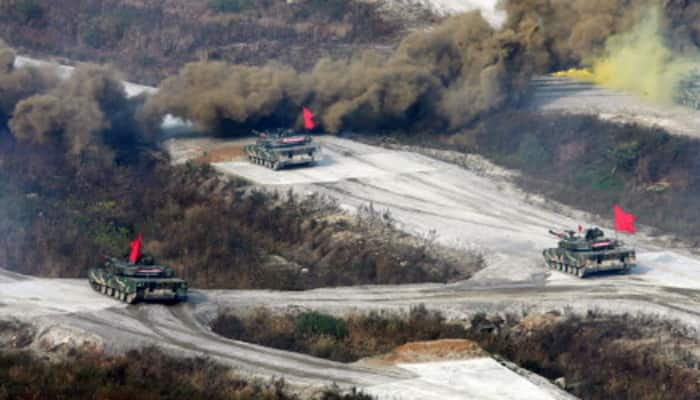North Korea’s fifth and most powerful nuclear test, packing a force of 10 kilotonnes, in September this year sent ripples across the world capitals.
The blast was equivalent to 10,000 tonnes of TNT - so powerful that it caused a 5.3-magnitude earthquake in the region. It was Pyongyang’s second test after the January 6 explosion.
The US Geological Survey had initially thought it was a seismic activity but later said it was a huge explosion at Punggye-ri underground test site, where four other tests were earlier conducted.
The US bombs that wiped out one million people in Japan’s Nagasaki and Hiroshima cities during the World War II had packed a force of 21 and 15 kilotonnes respectively.
Pyongyang hoped the tests would enable it to create nuclear warheads with higher strike power.
And as Kim Jong Un chuckled over the growing prowess of his military, the neighbouring South Korea and Japan never looked so venerable before.
The blast of such a high intensity was bound to draw attention, particularly when it originated in North Korea, a ‘pariah’ state whom the West religiously keeps a close watch.
And the world reacted
At a hurriedly called emergency session, the UN Security Council warned North Korea of “appropriate” action and said Pyongyang posed a clear danger to the international community.
It noted the test was a “grave provocation” and a violation of its past resolutions that prohibit North Korea from conducting nuclear tests and launching ballistic missiles.
American President Barack Obama threatened Pyongyang with fresh sanctions and stressed, "To be clear, the United States does not, and never will, accept North Korea as a nuclear state."
South Korean President Park Geun-hye hoped, “Such a provocation will eventually hasten its path to self-destruction."
Park described the test as "fanatically reckless" while Japan’s Prime Minister Shinzo Abe said it was "absolutely unacceptable".
Seoul now plans to deploy a missile shield with the help of its American friends. And it’s currently negotiating with the US for the deployment of the American THAAD anti-missile system.
Reiterating the American position to Park again following the test, Obama said the US has "unshakeable commitment” to defend its allies -- South Korea and Japan.
Sanctions never worked
The repeated UN sanctions have had little effect on the North Korean regime or its leader Kim Jong Un.
The UN had imposed a round of sanctions after the January blast but that didn’t stop the North Koreans from testing a range of ballistic missiles, including some launched from underwater.
Some of the sanctions included ban on exporting its natural resources, supply of aviation fuel and the sale of arms.
The Bomb
North Korea conducted its first nuclear test in 2006. The explosion was less than one kilotonne.
But it repeated that feat in 2009 and 2013 with more powerful two-kilotonne and 6-7 kilotonnes respectively.
Although North Korea continued to improve its nuclear and missile capabilities, it is not yet known how close Pyongyang is to mounting a nuclear warhead.
The North Korean regime opposed any plans to install THAAD on the Korean Peninsula, and sees the annual US joint military exercises with the South a “major provocation” and threat to its security.
















